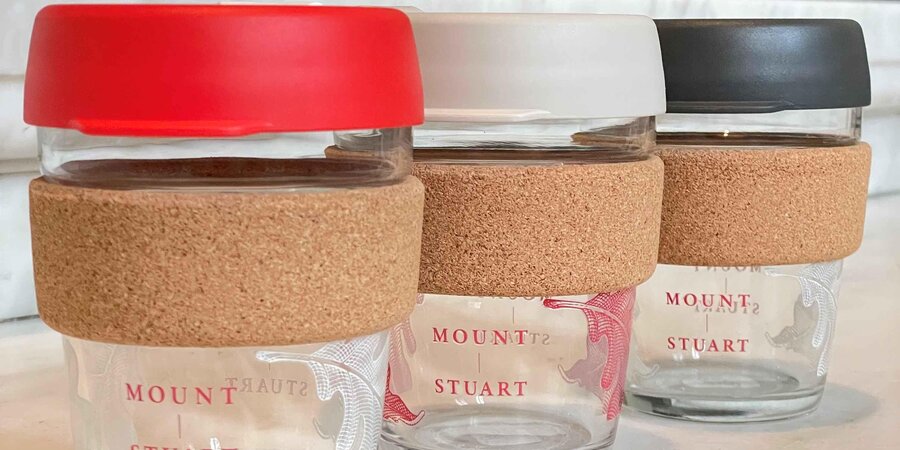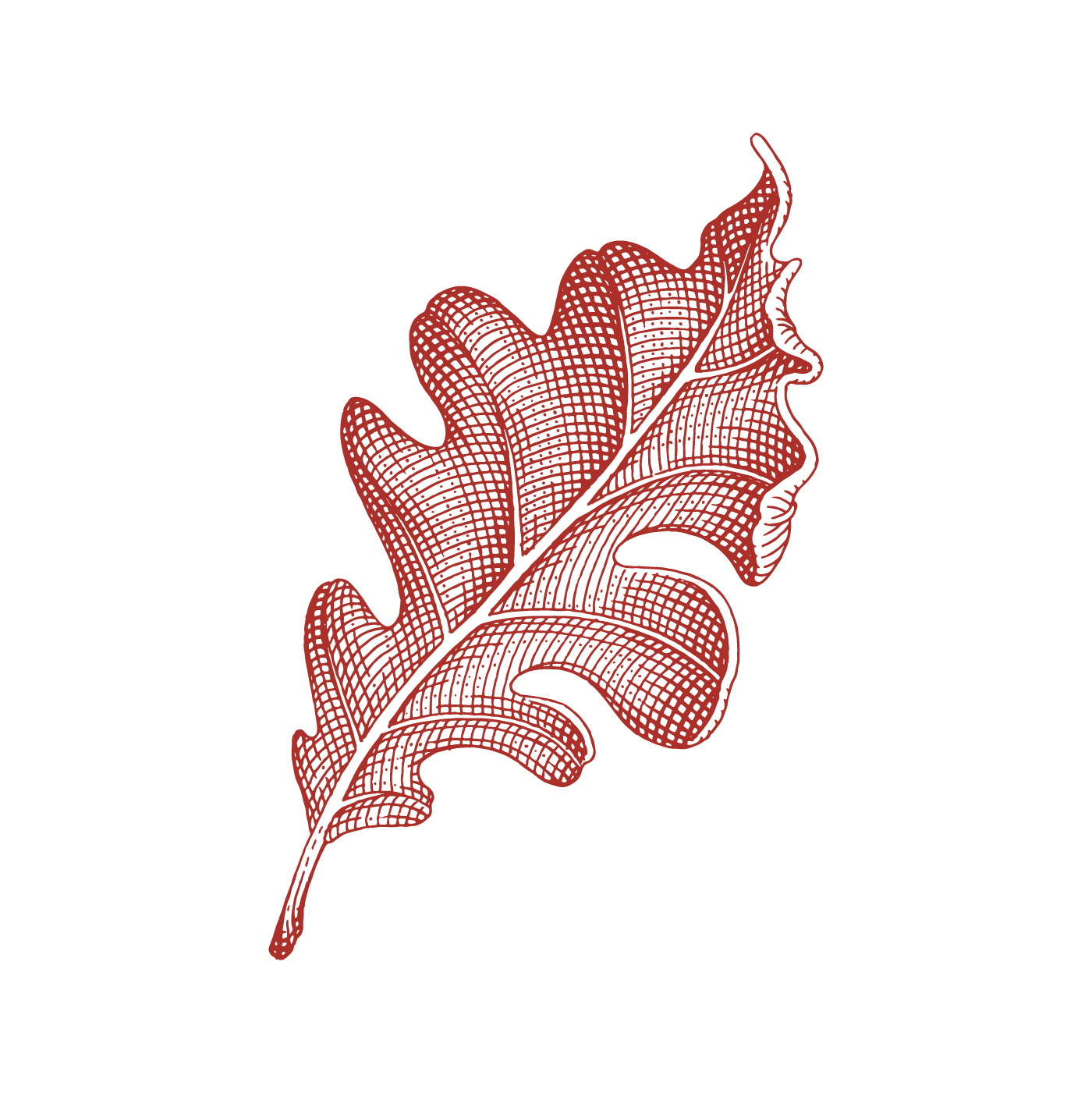Oisín Byrne in conversation with Sophie Crichton Stuart
Artist Oisín Byrne joined Director of our Contemporary Visual Arts Programme, Sophie Crichton Stuart, in conversation following the launch of his exhibition smell the book at Mount Stuart. You can read a transcript of their discussion below.
SCS: I think the title of the exhibition communicates the underpinning of your work here, by the, or perhaps I should say your, literary canon. I wonder if you could speak to this, and of course we will keep returning to written sources throughout our discussion.
OB: The title of this exhibition is also the title of one of my songs, which is called I smell the book. It’s a song about pre-grief, like I’m pre-grieving and preparing for that moment, preparing to miss someone. In it there’s a passage where I describe an encounter, this moment where I’m sitting, reading a book and the air, there’s a sweet smell somewhere and I don’t know where it’s coming from. I literally smell the book, then I smell my own knee. It is physically coming from neither, but it turned out that the smell was something the book was doing to my perception. It wasn’t a real smell; it was a sweetness of perception.
The title of the show I thought was appropriate because I have a relationship with books that is both about reading but also might be about different ways of interacting with books. When I was a teenager, I used to sleep with different books under my pillow and believed that I could imbibe them.
[Laughter]
The idea of tasting or smelling or hearing a book I thought was resonant with the paintings, songs and films.
SCS: Daisy LaFarge in her text a feeling of language which accompanies the exhibition says: “‘a feeling of language’ is the phrase I find looping in my head when I experience Oisín’s work, whether it takes the form of painting, song, performance or film, whether it uses whole sentences or lone words or dissolves into vowels, consonants and punctuation marks.”
Your relationship with the written and spoken word is intellectual and visceral at the same time. Would you comment on this duality?
OB: I really love Daisy’s text. We have a shared enjoyment of language as something at times quite mystical - but also in critically thinking about the ways in which language and power are so deeply entwined.
The paintings in the show take singular characters from books and place them within this rudimentary perspectival space, these straps, which I see as kind of being like the sides of the throat or game markings. I found when I was making those paintings that if they conglomerated in a way that was literal, or pointed to a single meaning, they weren’t satisfying me as much. I wanted them to be small strands of DNA taken from both the Bute archive and my first editions which are more contemporary, largely modernist. And returning to Daisy, I wanted this DNA not to be represented, but to linger and be felt in the work, like a scent.
The songs do a similar thing with language, they don’t come from a single speaker, or indeed address a single person. They’re switching their mode of address constantly; the you in the songs is not the same throughout the song. Like the paintings, the songs are networks of citation, whether I’m citing my granny or Baudrillard. I collect little fragments of language usually that have an oral or spoken quality to them, they get sellotaped together and begin to make their own sense. I use orphan sentences from my own essays, precious sentences that I really loved but didn’t get to use.
SCS: What we experience when we’re walking around the exhibition and when we experience the paintings and the films and the songs is very much a feeling of language and very much an exploration of language and an immersion in the pleasure of language. Frank O’ Hara, a favourite author of yours, and indeed mine, embodies the pleasure of language and immerses the reader in that pure pleasure. Daisy LaFarge commented that your work was “closer to fetish, then, than to a game of knowledge, closer to a feeling of language as pleasure”, do you agree?
OB: Totally. The alphabet is an open-source technology that is available to everyone. We all use the alphabet every day in more or less banal ways, and then some writers take the same tools and arrange it in this extraordinary way.
So, I was asking myself what is an E in Clarice Lispector’s hands, what is an A in Samuel Beckett’s hands, what is an O in one of the Gaelic texts? I’ll admit there’s definitely a fetishisation, I fetishise the books as objects as much as containers of knowledge. Because your books are on your shelf and they’re very private in a certain way, it was really nice to be able to try to paint their essence at a scale that was more available, that you might see in passing and have a different more spatial and embodied relationship to.
SCS: There’s an expansiveness to that.
OB: The pleasure is also in colour. The form is quite simple – they’re colour field paintings in another sense.They describe to me a space that I experience when reading, as I presume other people do, the words are kind of moving, I’m slightly hallucinating as I’m reading. A PAIXĀO, the Clarice Lispector film, also touches on this liminal space of reading.
SCS: Can we talk about colour a little bit? The colour of your works is really important in the context of the spaces in which you are exhibiting.
OB: It was kismet – I had made a number of those small paintings in that porphyry brown – and intuitively this colour spoke to the materials in the house. I made only brown paintings for months. It was a colour that was almost a material, it wasn’t a colour it was like stone or muck. It made them like carvings and the pinks and reds were pulling it out of the historical space into something a bit more contemporaneous.
SCS: As with Frank O’Hara, the pleasure in the language we are immersed in with your works contains humour. I particularly notice the self-deprecating humour in the film works. Can you elaborate on the use of humour in your practice?
OB: Well, humour isn't really something you should self-designate. But yes, self-deprecating and possibly also trying to undermine ideas of earnestness or self-seriousness. There are moments in the QUARTET film where I try to undercut or lovingly ridicule my own attempt at glamour - as well as to undercut the gravitas associated with string music.
Humour can also upset the status quo in a disguised or seemingly benign manner. I got a real giggle placing the painting Crioch in front of the altar in the chapel. There are parallel narratives of Christianity in Ireland coming and getting rid of paganism and the English language coming and wiping out, not completely, thankfully, Gaelic.
Crioch is a Gaelic word which means boundary, finish or death. You see it at the end of Irish plays, and in the Mount Stuart Archive at the end of an elegy. At the end of French plays it says finis which is so poised and a little pompous. The Irish is much more visceral. I found the word itself sonically humorous…Criiiiiocccch [mimes throat cutting]. It has a Beckettian and dark humour to it. And placing this work in front of the altar was as much as to say, “we’re still here.’”
I said to Morven, “maybe we’ll move it a little forward, I don’t want to totally block the altar for visitors” and she said, “but you do, don’t you?”
[Laughter]
Another painting I enjoyed placing was the Molly Bloom painting above the bed. The painting is based on Molly Bloom’s “yes, I will, yes” sexy soliloquy at the end of Ulysses - a big YES above the bed in Lady Bute’s bedroom. I quite like the idea of it saying ‘stop’ in the church and ‘yes’ in the bedroom.
[Laughter]
SCS: That work is beautifully placed, it’s very celebratory.
A series of your painting works are installed, appropriately, in the library, together with some source material from the Celtic texts held in the Bute Collection, could you talk to us about the inspiration that you took from these Celtic texts, and the dialogue you had with our librarian Elizabeth Ingham, and how these influenced the works, and specifically noting the glyphs, notes and letterforms found within these paintings, and those in the hall, chapel and Lady Bute room?
OB: I had a lot of fun in the archive, Elizabeth was very welcoming. We were looking at the Gaelic texts primarily but also, I remember asking “do you have any maths?” and suddenly Euclid came out and Newton. Caoimhin Mac Giolla Leith helped me to understand some of the Gaelic texts. I found when I went back to painting, I didn’t want to front load meaning. I mean a few of the paintings front load a visible meaning, the others are these O’s that are wide and short vowels, or this antiquated Etc. which is an ampersand with a C. It was typographic fetish as Daisy says.
SCS: What was really interesting – and this was a later part of your thought process also helped by some dialogue we had with Emma Roche – was that we ended up displaying the Celtic texts in the case in the library and also texts from your own archive encompassing Samuel Beckett, Frank O’Hara, Clarice Lispector, Doris Lessing and Susan Sontag. Could you talk to us a little regarding these authors and their importance to your practice, and to this project?
OB: The specific authors were the books I picked up from my shelf in the process of painting – the books I was drawn to on a given day. There were plenty of other people I could have invited to the dinner party but there were only eight seats or whatever.
I think the link between the Gaelic texts and these modernist writers for me stems from the way in which such brilliant modernist writing came out of Ireland. Jamie O’Neill writes about how this isn’t a coincidence, and stems in part from the Irish speaking a borrowed tongue on a Gaelic syntax. James Joyce is listening to the particular syntax of the people on the streets of Dublin who are speaking – ‘oh she’s after spilling the milk’ – this Gaelic syntax transposed onto English.
Beyond this, the fact that the Irish are speaking a language which is not their own means that they can have a playful, slightly improper relationship towards it, a proper disrespect, something that doesn’t stick to the rules completely and manages to make something more interesting out of it. Jamie O’Neill’s uses this metaphor of throwing the Chippendale furniture on the fire because you need heat.
SCS: That playfulness that you’re talking about feeds into the humour that I’m referring to. I’ve seen your collection of first edition modernist writings and it's exciting and I’m really happy that you’re exhibiting a small selection.
OB: It’s nice for me to bring some relevant books from my small collection. They’re in such a glamorous glass case. They are usually on a shelf or on my lap, both private spaces.
SCS: Your performative relationship with literature is embodied in your music, and then again in film. Could you expand on these elements of your practice, speaking to the works in the chapel and upstairs bathroom?
OB: In the chapel there’s a series of three songs with a 16mm film which is shot on a Bolex by Patrick Hough, an Irish artist. The songs, as I’ve slightly mentioned, are conglomerations of bits of language that I’ve collected, some overheard on buses, some from books or from my friends. Someone will say a delicious statement, and I will say “consider it stolen!” and my friends know this means they will end up in a song. Othertimes someone will retell a story and I’m like “that’s in one of my songs!”
The work in Lady Bute’s bathroom is a work about a hallucinatory experience while reading a Clarice Lispector book whilst on painkillers for a broken foot. I have this kind of reverie where I meet Clarice, and we have dinner. She is scripted mostly with quotations from her own writing. Clarice’s writing, I always find, is like an interior voice - her voice appears to come from within me. Reading that whilst kind of high doubled down on this mirroring. At the end of the encounter, a storm arrives outside, and I go to clean the table and Clarice says, “let the storm wash the plates”. This line is lifted from Edwin Morgan, a brilliant Scottish poet. So, his words are ventriloquised by Clarice.
SCS: Together with Ben Mullen you designed the Risograph prints named ‘Anatomy of Song’. I find these ‘song diagrams’ fascinating, as they deal with form, feeling, anecdote and plot – they are the creative anatomy of your song process. Perhaps you can speak to this, on a broader level I see that they reflect, not only the composition of your music but more generally the weaving together of the respective parts of your practice – of writing, painting, film and song.
OB: The diagrammatic nature of those song anatomies relate laterally to the Joyce strikeouts in his notebooks, but also to T.S Eliot’s The Wasteland. There’s an annotated facsimile of The Wasteland which has his scrawled notes on one side and then a typographic, clearer version on the other side. My diagrams draw from this.
The song notations take phrases from the song lyrics and unpack their referents. The notes spider off from the lyrics, providing atomised bits of information and citation that then swarm, or glide, around each other. One of the things about writing, is that you can’t necessarily think or write the whole thing at once. When I’m essay writing I write a paragraph then I hide it away and write another one and later they come together and birth another paragraph. So, thinking for me is often modular.
In my essay writing, I often switch between a more academic tonality and a more anecdotal tonality, going deep but keeping some levity in things, some lightness, some access and anecdotes are helpful. Beckett talks about pleasure in writing being the meat that wraps the dog’s pill. In order to make a more complex or difficult thought digestible, you need warmth in order for people to bother to eat or want to taste it.
SCS: The anatomies really exemplify to me how your thought process works and having worked with you over the last two or three years and being involved in ongoing dialogue they are very visually reminiscent of the discussions we’ve had and the way you think. I find them really fascinating and they’re beautiful in their own right.
OB: We printed them on a risograph. What’s been really nice about this show is because we had all that time we’ve layered it. The paintings have to be made six months beforehand because they’re thick oil paintings and they take forever to dry. Then I could focus on another layer of the songs and film and then those song diagrams. Without time – I couldn’t do all those things at the same time – create other layers of approach and access from different angles.
SCS: Thank you Oisín, it’s been an absolute pleasure working with you. It’s a very beautiful show with many different dimensions and points of access. I’m going to open the floor to any questions.
KC: I’m very interested in your anecdotes in your writing, and I find them amusing and engaging, especially the little bit about Doris Lessing when she was awarded the Nobel Prize.
OB: Have you seen that video online?
KC: No, I haven’t but I could visualise it in your text, you know…
OB: The artichoke helps, doesn’t it? A stout noun.
KC: The artichoke and the onions. And the sarcasm when she states back, “well, you’ve said it, thank you.”
OB: “You’ve said it all for me.” I highly recommend everyone watch that video, it’s on YouTube. Look up ‘Doris Lessing Nobel Prize’. It’s about three minutes. The reporters ask Lessing, “have you heard the news,” and she says, “no, no,” she’s struggling with bags out of a taxi and they say, “you’ve won the Nobel Prize” she says, “oh, Christ.”
[Laughter]
Then she says, “Can you help me up on to the pavement? There are more exciting things. I’m trying to think of something really suitable to say. I suppose you want an uplifting remark?”
KC: Very funny. And it captures her perfectly…she was like that, you know, she was like that. And of course I could imagine you dressed as Anjelica Huston in the wig.
OB: As a child, yes!
KC: How old were you? About eight?
OB: Twelve. My parents gave me a bob black wig for my twelfth birthday so I could dress up as Angelica Huston in The Witches [1990 film based on the novel by Roald Dahl].
Anjelica Huston played the Grand High Witch, dressed similarly to my outfit in the quartet performance except she’s much better looking. So, they got me a bob black wig for my birthday, and I had my mother’s black dress and gloves and the whole thing. We had a minder, and I was so excited. It was near the end of the day, and I came down the stairs in my full look and she shot me down. She said, “I never want to see this ever again”, and really, it was heartbreaking. Anyway, I made it in the end. She will have to see it again – in the Irish Times.
[laughter]
KMGL: Just a bit of an observation which has to do with the use of language. When you made that [throat cutting] gesture talking about Crioch, I had completely forgotten, that nestled in the word crioch which as you say means a border, an edge, a terminus is the word croch which in place names in Scottish Gaelic and Irish means the gallows.
OB: Wow. Gallows humour.
MG: We were talking about performance and language and one of the things I was taken by was the attention to detail in the costuming of the quartet, I wondered if you wanted to say anything about that?
OB: The string quartet were dressed in sweaters I designed, based on a genius post-it from above my sister’s office desk which says, “You’re Wrong.” My sister’s sense of humour is quite arch, where someone else might have “you’re perfect, you’re beautiful, you look like Linda Evangelista”, her idea of a motivational post-it is “You’re Wrong”, as in ‘challenge your thinking’, anti-dogmatism.
I guess in translating the electro-pop songs to strings, I was worried that the strings might bring an overly earnest quality. I don’t think they did, but the costumes are a further sprinkling of camp and irony.
JC: I’m married to you.
OB: Yeah. Are you?
[Laughter]
JC: I have the certificate to prove it.
I found reading the song diagrams really interesting and exciting. I felt that what you were doing was letting us, me especially, read your thought processes and understand how you arrive and how you construct. My question is, within conceptual art, how important is it that the artist let the rest of the world into their thinking processes and to help people understand the works in the way you have done with those diagrams? Which I had never seen before, until yesterday. I found it insightful and touching. I thought that you had treated us with a sort of respect. That’s not a respect that’s extended by all conceptual artists, I feel, in a way that is both simple and open hearted.
OB: It’s really nice that you say that because that was part of my feeling around them. Making those song diagrams was a question of access. The difficulty with this show is I didn’t want to shove meaning down anyone’s throat, the paintings are supposed to be open and slightly mysterious, they have a slight withholding to them. Which I don’t think is ungenerous, it’s supposed to point you to another thing: to the gaps between things and words. I’m more about disclosure than withholding. If we hadn’t had such a good team here, I wouldn’t have had the time or space to put in that layer of access or disclosure.
JC: How important did you feel the disclosure is?
OB: I feel like the song diagrams are the centre-pinning of the show, they’re the easiest route in, in which you can understand the whole thing. I didn’t want to impose a meaning. I wanted to triangulate ideas, make available meanings.
KC: The point that’s so good about them is that they’re not an explanation.
OB: No, I really didn’t want explication…“this song is about…”
KC: They’re not an explanation. It’s a very good question because it relates back to conceptual art and sometimes we read sheets on conceptual art and it’s very theoretically impenetrable and seems to be the justification of the work and if you don’t understand then you can’t get into the work, it’s a sort of chicken and egg thing. Whereas those diagrammatic presentations, they’re not an explanation but they enrich the understanding of the works.
OB: I’m glad they’re engaged with. That’s why I made them hot pink, you know, so you can’t miss them. Important! It’s not an explanation, it’s not a justification. There’s a line in the song upstairs “no back-dated, post-justifications.”
[To JC] I personally think access is very important, in answer to your question, but I can’t speak for other artists, what’s important for someone else’s work. I do think there are scenarios where a total state of withholding creates an energy that is appropriate to a certain work but it’s not appropriate to my work because my work is… I want it to be warm and welcoming and foreboding. As you said, dignified and elegant and devastating.
MG: Thank you so much for your time and generosity.
OB: Thank you, Morven.
MG: And thank you Sophie for really insightful questions and a great conversation. So, folks join me in thanking Oisín and Sophie.
[Applause]
END
What's On
Mount Stuart Festive Feast Pop-Up @ Bute Yard
Saturday 14th December & Sunday 15th December 2024

Mount Stuart Bakehouse Pop-Ups @ Bute Yard
Thursday 28th November, Friday 29th November, Thursday 5th December, Friday 6th December, Thursday 12th December, Friday 13th December

Mount Stuart @ Bute Yard Christmas Markets
Saturday 30th November & Sunday 1st December 2024


